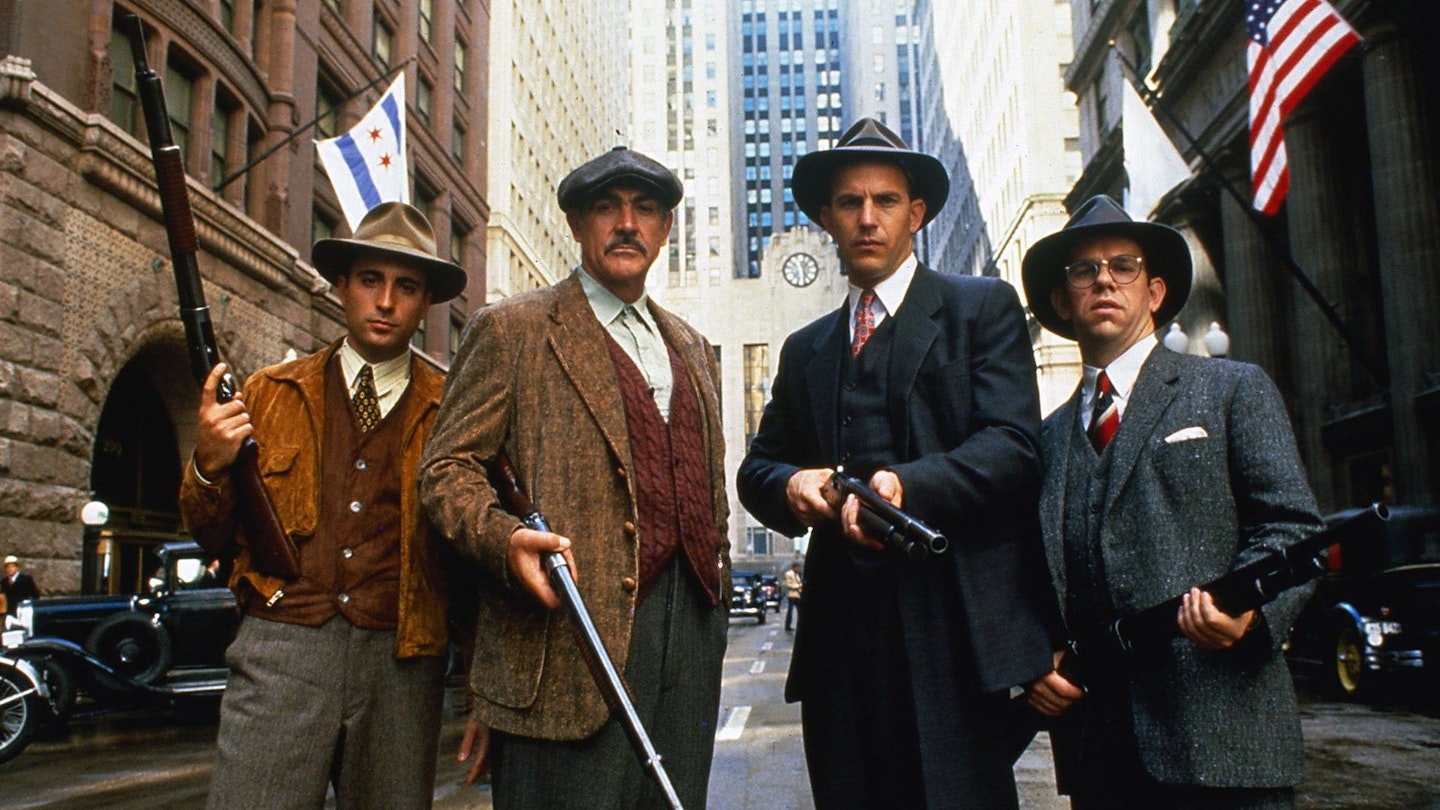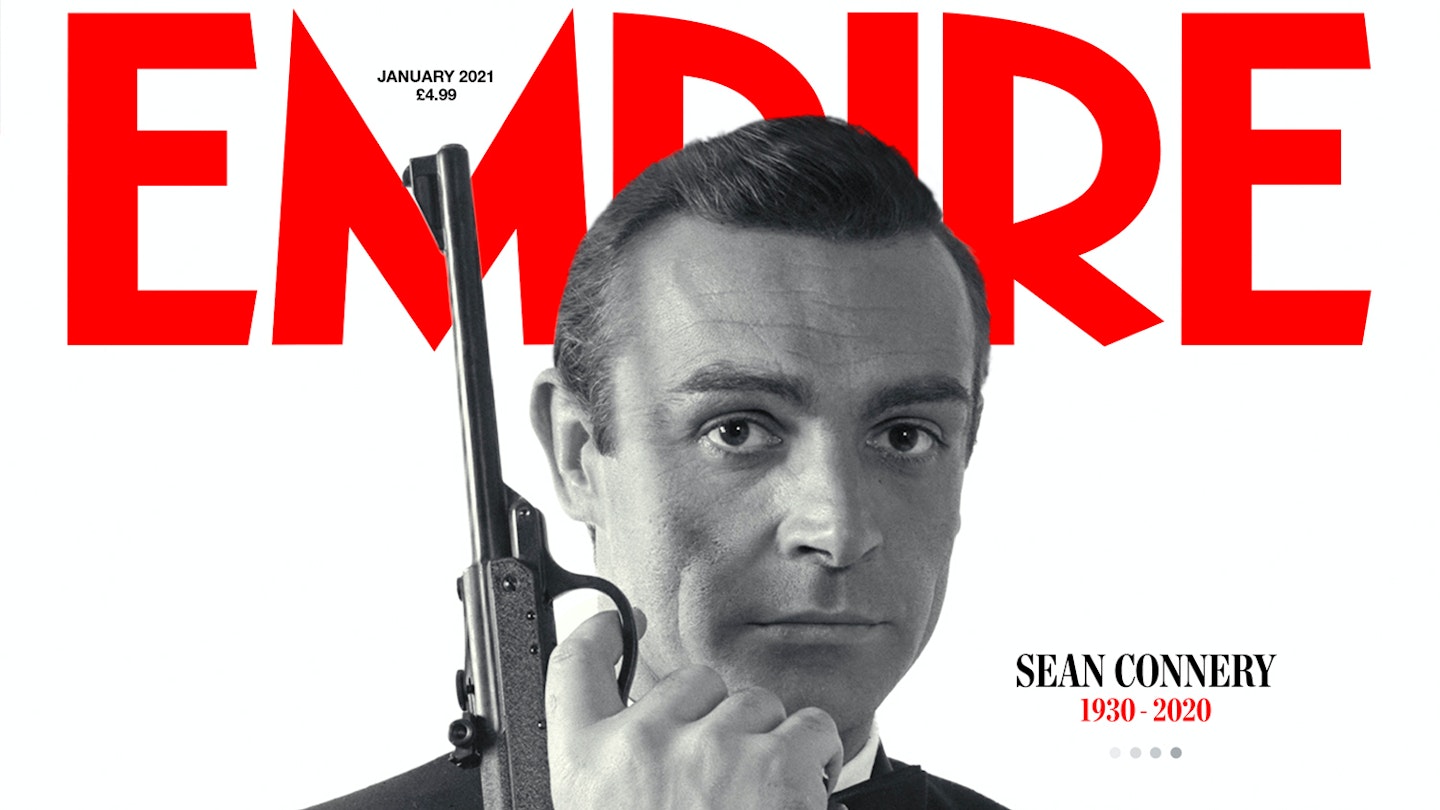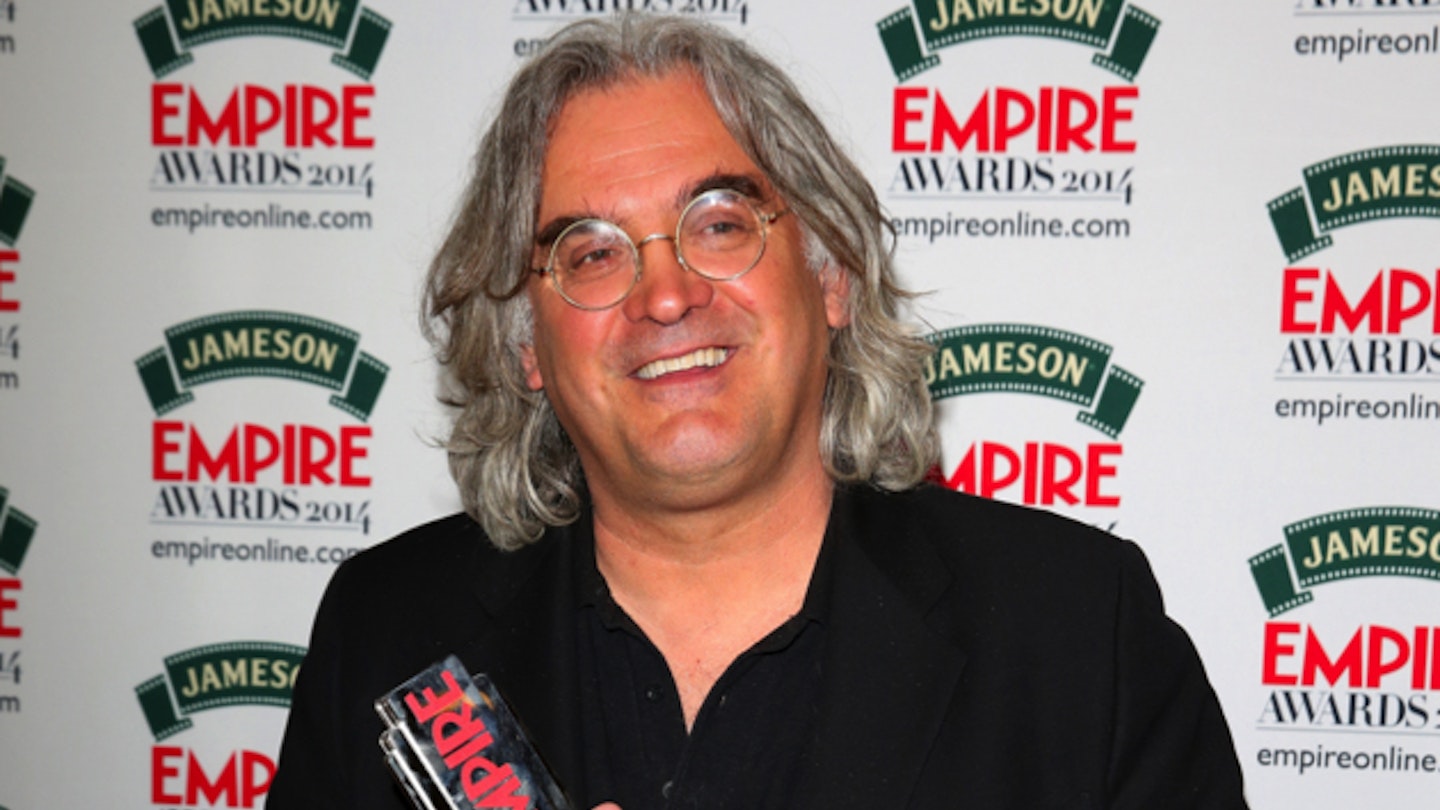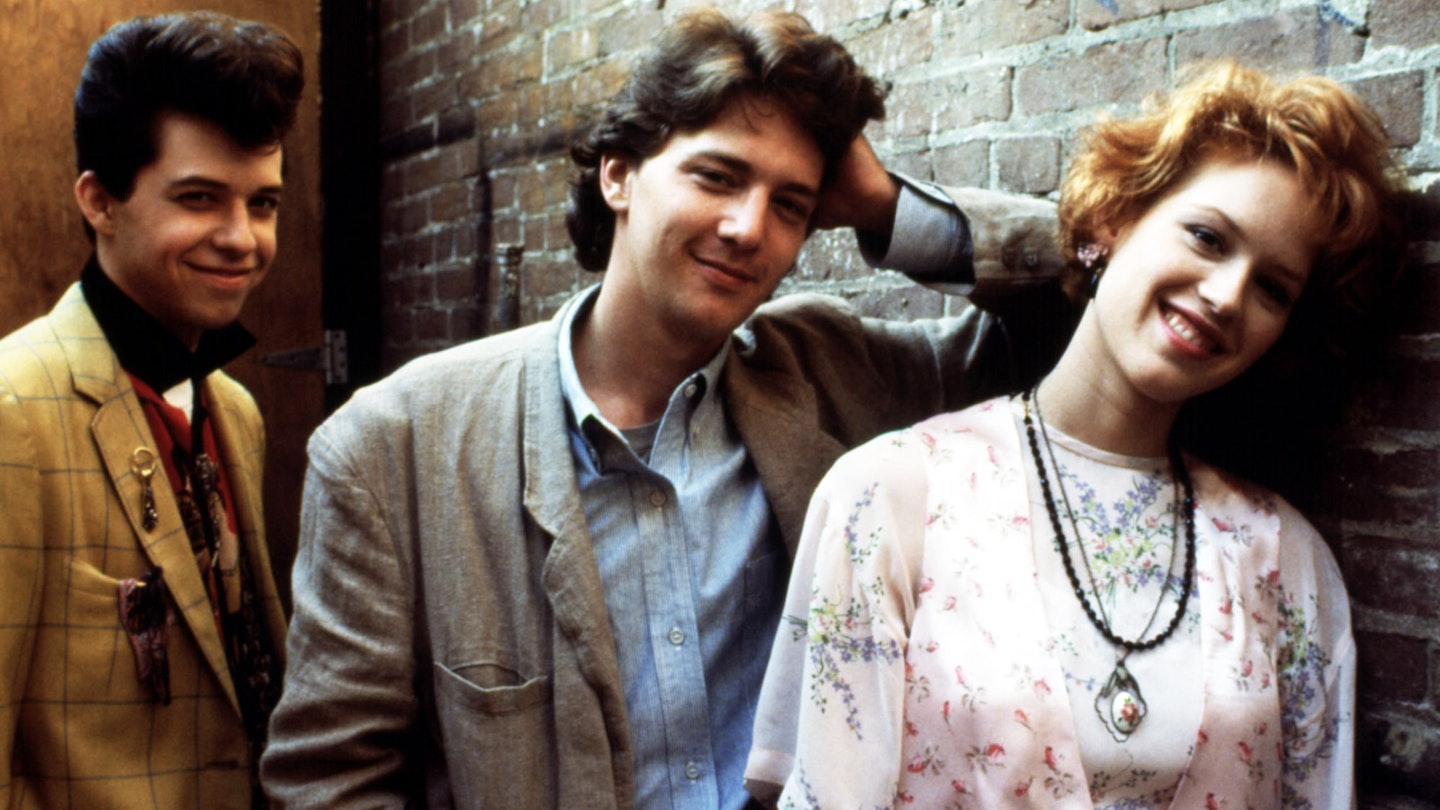ROBERT DE NIRO had, of course, been fat before, guzzling pasta and ice cream in record time to transform his sinewy frame into the sweaty bulk of the ruined Jake La Motta for Raging Bull. So no-one was surprised when he slipped away to Italy weeks before he was due on the set of Brian De Palma's broad, beaming cinematic take on the '50s television series, itself based on the true story of the treasury agents who tackled organised crime in Prohibition Chicago: those sturdy, upstanding Untouchables.
Waving aside all offers of make-up tricks and padding, De Niro again devoured pasta, bloating his lean face to match that famously lurid beachball of a head grinning from the sepia-toned shutterbug photos of the era. When he returned to Chicago, he found the tailors Capone had used and had identical suits fitted, demanding silk underwear even though it would never be seen onscreen. Capone's actual cologne bottle and cigar cutter were procured and placed almost invisibly among the lavish paraphernalia of the opening scene.
As the film begins you can hear the voice, thick and threatening, from beneath a hot towel softening him up for a shave. Finally, as De Palma's roof-mounted camera begins to close in, the face is revealed. His jowls mumpy and loose like Brando's Corleone, we get the full vista of Alfonso Capone, and there's no question who wears the bad hat in this particular game of cops 'n' robbers. De Niro had come full circle, all this Method micromanagement landing a pitch-perfect Capone when Capone had modelled himself as a movie villain to begin with.
There was something that scripter David Mamet had grasped instantly: this man was a show-off. As Eliot Ness' incessant needling finally breaks his cool, Capone's stentorian fuming is magnificent: "I want this guy dead! I want his family dead! I want his house burned to the ground! I want to go there in the middle of the night and piss on his ashes!" Silk knickers or not, it was all there on the page.
Out of the many things to adore about De Palma's most completely satisfying movie, you've just got to love the script. Its beats are four to the floor, timed to perfection; its characters are painted in strong, superficial tones; its language is bursting with Mamet's trademark bites of exuberant nastiness. "It's just like a wop to bring a knife to a gunfight," snarls Sean Connery's Oscar-winning Malone to a smarmy hit man.
The speech Malone gives to Kevin Costner's greenhorn Ness in the safety of a church is now a classic: "He puts one of yours in the hospital, you put one of his in the morgue. That's the Chicago way." Everything crystallises with the words - from there it was just a case of getting the best men for the job. Collaboration, of course, lies at the heart of moviemaking and here was the Hollywood equivalent of Real Madrid: showy, extravagant and assured.
Around De Palma's midfield playmaker, spraying curling passes at impossible angles, we already have Mamet's heel-biting fullback, De Niro's gifted keeper (safest hands in the game, back then) and Connery as centreback, a leader, a shouter, the rock who seems so liberated without a bloody syrup on. Add to them Costner's classical forward, Andy Garcia's pretty-boy Italian import, plus Ennio Morricone (composer) on one wing, with his soaring runs and sublime footwork, and Giorgio Armani (costumes) on the other, so elegant, a gent in a boy's game. With a line-up like that, as De Palma puts it in a fresh DVD interview: "We knew it was going to be a hit, you could just feel it."
It's also a remarkably straightforward piece of drama. He would never admit it, the old curmudgeon, but De Palma could easily be taking a lead from Star Wars' pinpoint storytelling. You want to do moral absolutes, good and bad guys duelling across the shiny frames? Then go to the one-stop shop for genre turned myth. We have our bad guy, no doubt about it. He's rotten to the core, weeping at the opera while Connery drags his bleeding body across the floor in a masterclass of cross-cutting dynamics. But the good guys are just as boldly drawn.
As the legendary Ness, Costner was a relative nobody who'd picked up good notices in Silverado. De Palma liked his openness, this sense of the ordinary man behind the movie-star good looks. He has that gleam of American righteousness about him: a Gary Cooper, a Henry Fonda, a James Stewart, an untouchable. While the film never really attempts to deal with the murkier aspects of law enforcement - despite the director, it is a resolutely anti-'70s movie - there is a subtext of Ness reaching beyond the moral bounds he sets himself. At the centre of it all is this Wyatt Earp of Chicago, incorruptible, but finally ready to go the distance. "What are you willing to do?" implores Malone again and again. It's the closest thing we have to complexity, but the movie's pleasures are simplistic, bravura filmmaking on the grandest of scales.
In this age of comic book adaptation, mostly sprawling and messy, The Untouchables got it right without even being a graphic novel to begin with. The design is clean, bright and framed by the strict lines of the Chicago streets. The sensibility is outlandish, almost fantasy. Sure, there's genuine history there somewhere (one of the real Untouchables came to advise), but the film is, in the truest sense, comic book: that formative, psychologically inert patchwork of dreamy morality writ large.
Stylistically, it feels like De Palma was comparatively contained by studio requirements and the rock-hard script - his urge for flamboyance anchored by the story. Not that he's gone all Mike Leigh - there are POV angles with a handheld camera sneaking into scenes, si long tracking shots, and that superb Eisenstein party piece in Union Station, an unforgettable action sequence drawn from nothing but his sense of outrageous fun. The point is, such extravagance never pulls you out of the film - for once the story was as opulent as his direction.
Hollywood should think about giving De Palma one of these expensive caped crusader epics; spinning visual webs or leaping from tall buildings are as natural as breathing for the sourpuss showman. He even manages to sneak in his predilection for blood, smearing it on walls and floors, and rupturing pints of it out of an unhappy Connery.
The final flourish was the score. Instead of delivering something subtle, moody and eloquent, Morricone, with typical exuberance, sends the music soaring to cathedral heights, layering it with a pulsing piano, deftly echoing the unstoppable tick-tock of Mamet's script.
These were, after all, the rules of purest escapism. Nothing is to be restrained, nothing bound by any noble quest for revisionism or psychological insight. You want to make The Untouchables? You turn cinema into daft opera. You make the anti-Godfather of gangster movies, grinning all the way to the bank. That's the Chicago way.




